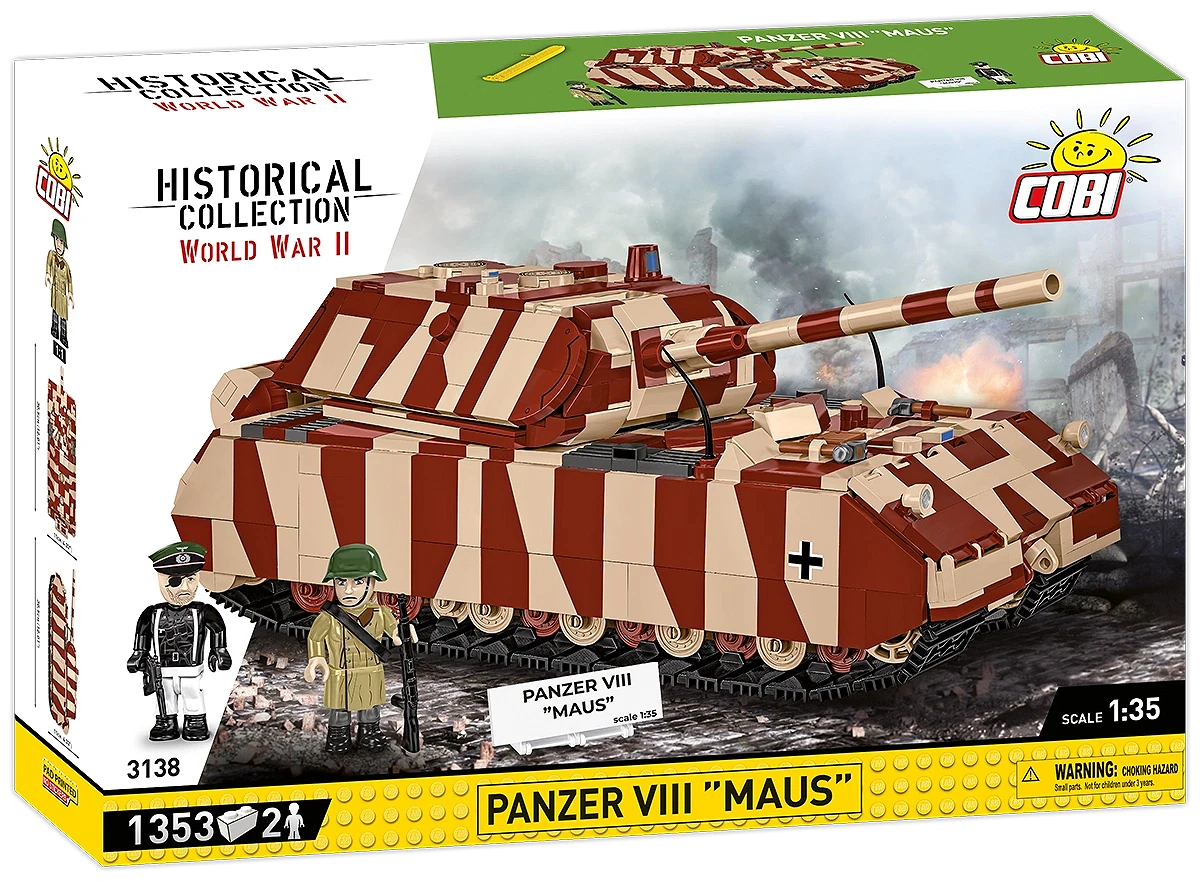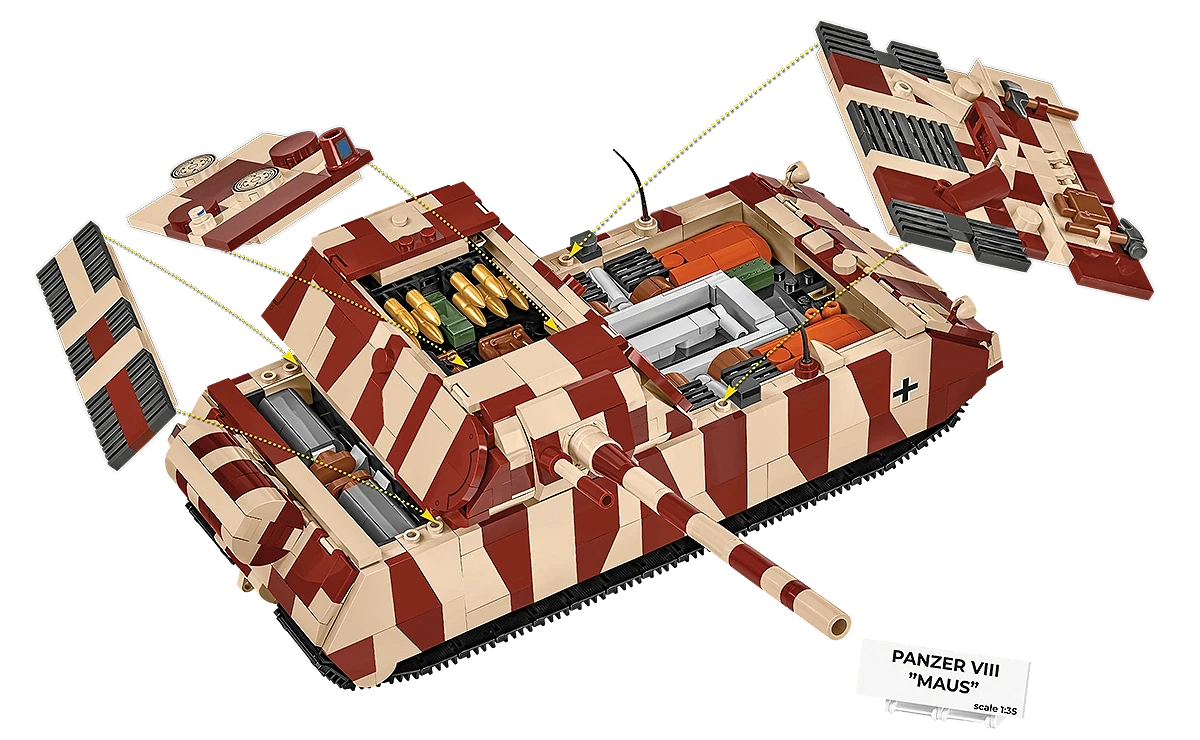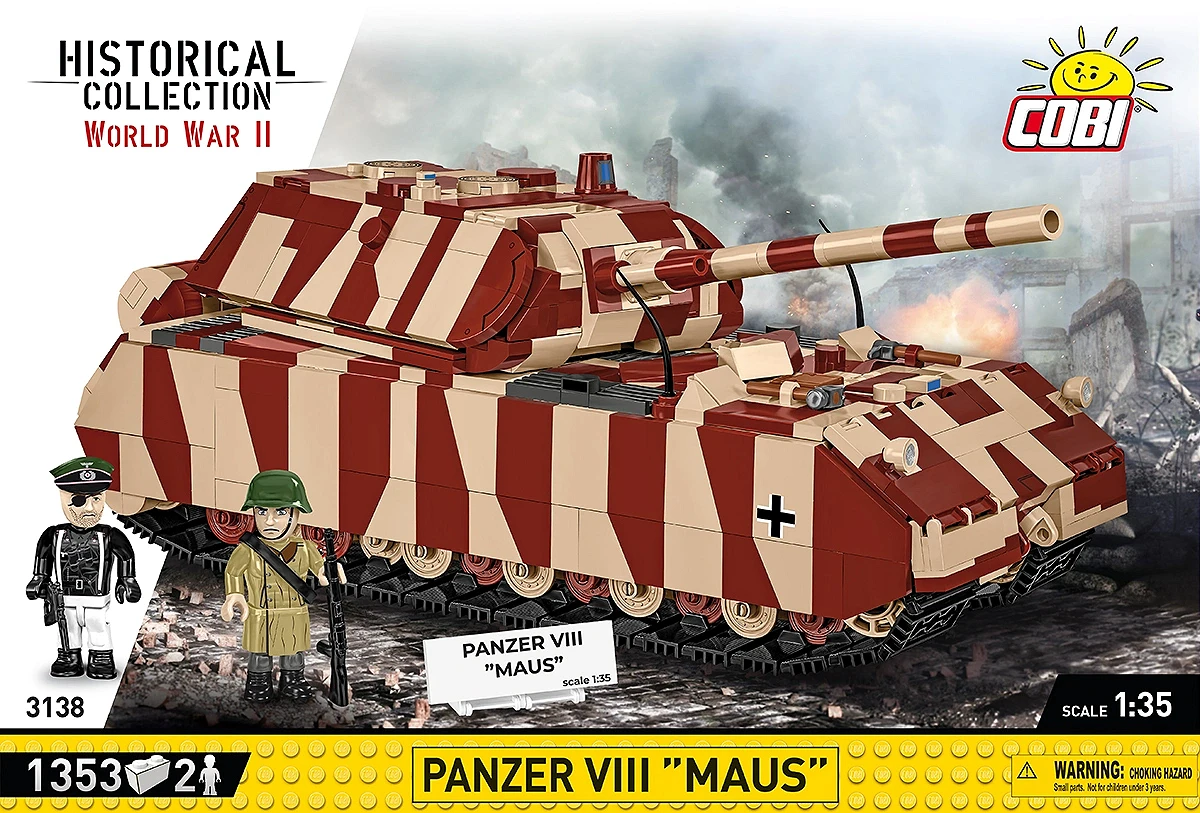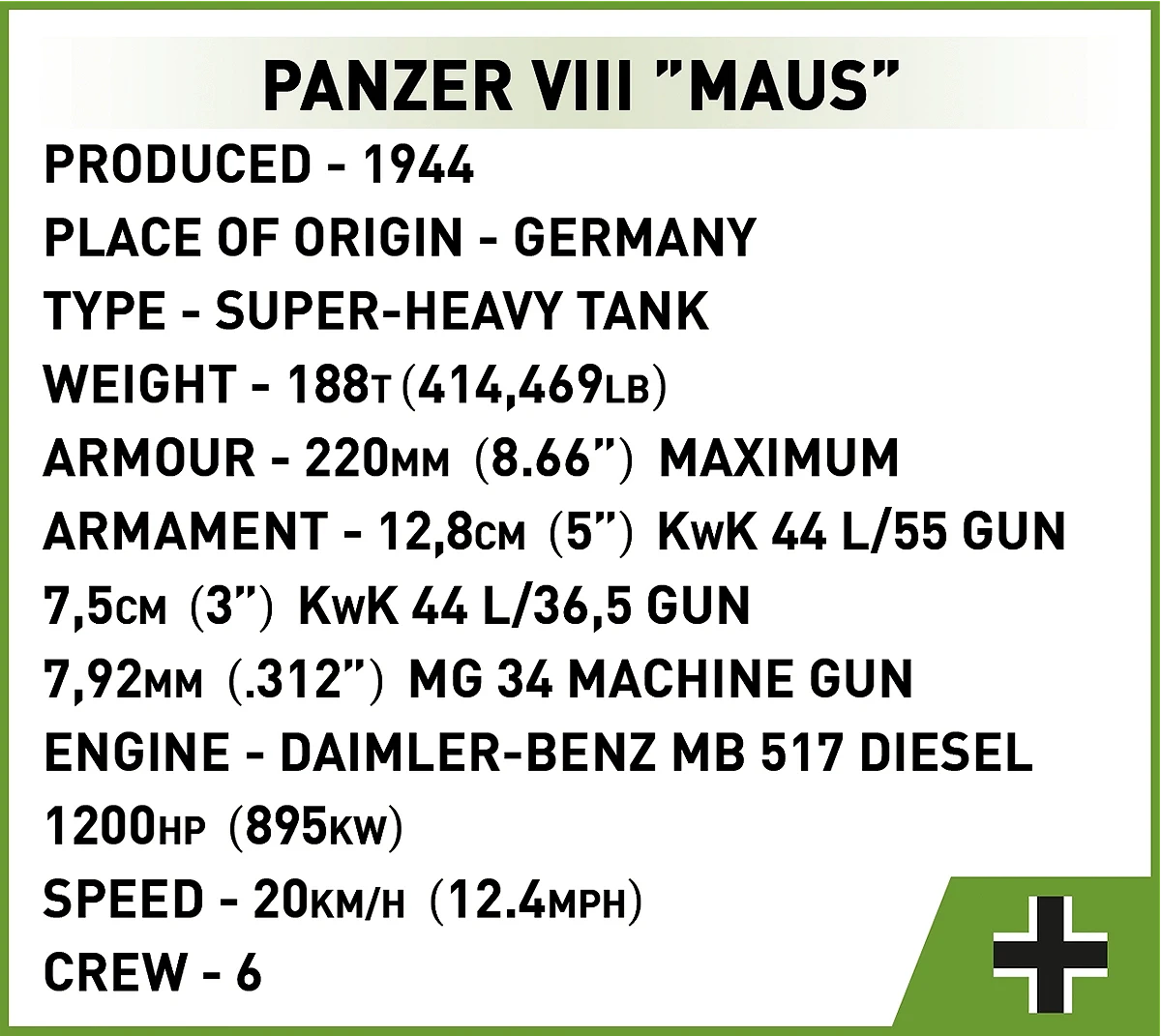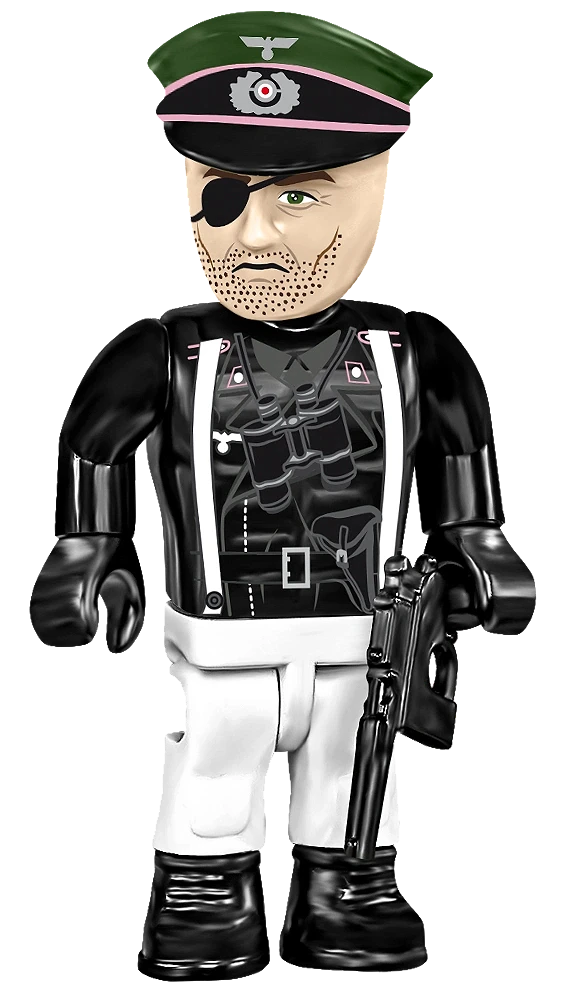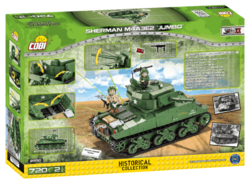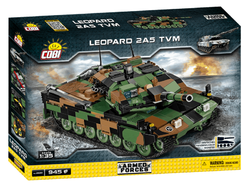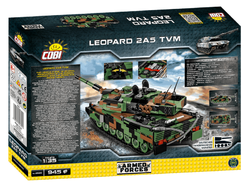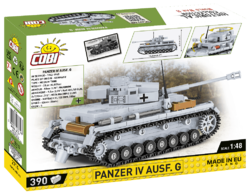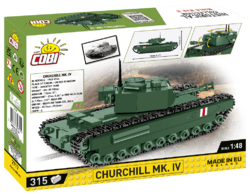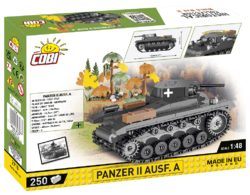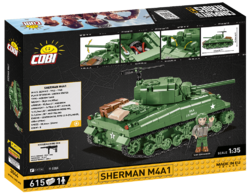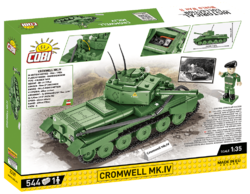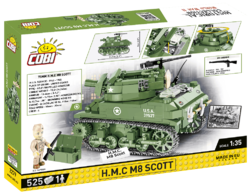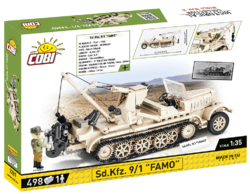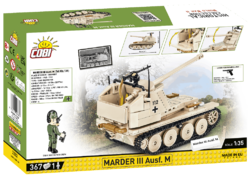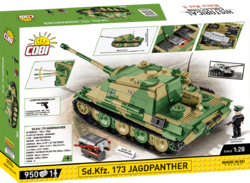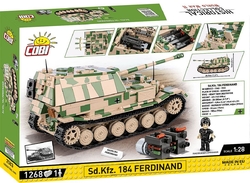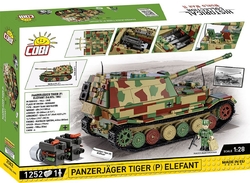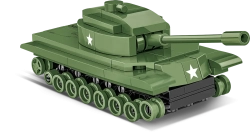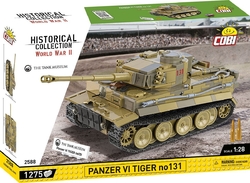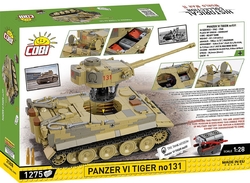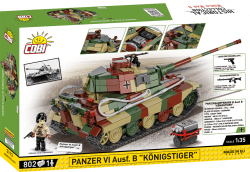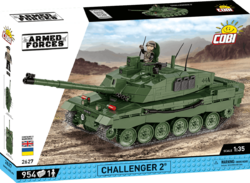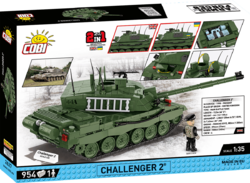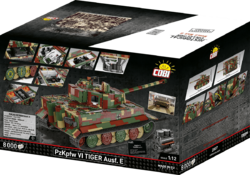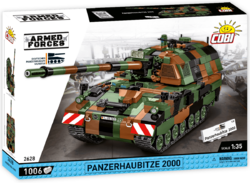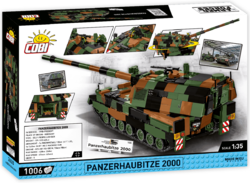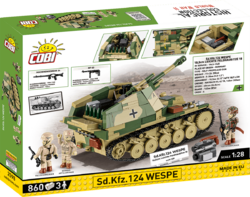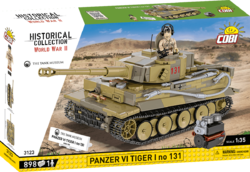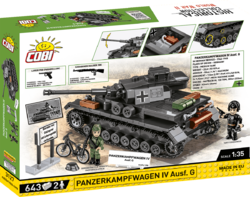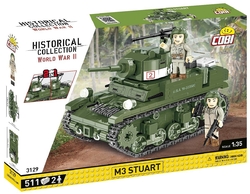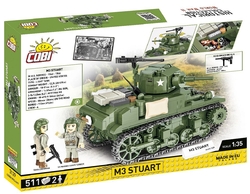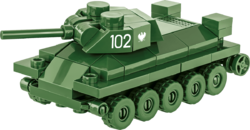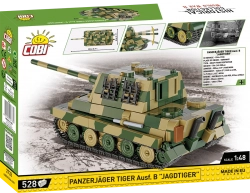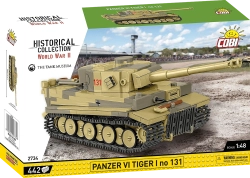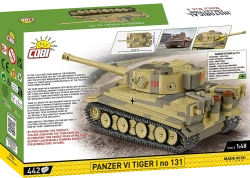Ein Modellbausatz des superschweren Panzers Panzer VIII Maus. Der große und detaillierte Bausatz verfügt über einen abnehmbaren oberen Turmteil mit einem Platz für den Richtschützen, in dem Munition gelagert wird. Der obere Teil der Wanne, in dem sich Getriebe und Daimler-Motor befinden, ist ebenfalls abnehmbar. Der Panzerturm ist drehbar und die Geschützhöhe einstellbar. Die Ketten des Panzers sind funktionsfähig und das Modell lässt sich auf rutschfesten Oberflächen leicht bewegen. Das Paket enthält außerdem eine Figur des Panzerkommandanten Paul Hausser mit Augenklappe, eine Figur eines Volkssturmsoldaten mit Mauser-Gewehr und einen Würfel mit einer Beschreibung.
Mehr anzeigen
0 %
(0 Bewertung)
2 297 Kč
Stk.
in den Warenkorb legen
Auf Lager - sofort versandbereit (2 Stk.)
| Katalognummer: | COBI-3138 |
| EAN: | 5902251031381 |
| Garantie: | 24 Monate |
| Hersteller: | COBI |
| Treuepunkte: | 25 |
| Transport kostenlos | |
| Preis ohne MwSt.: | 1 898,48 Kč |
Beschreibung
Parameter
Dateien und Hyperlinks
diskuze
Rezension

Did you know: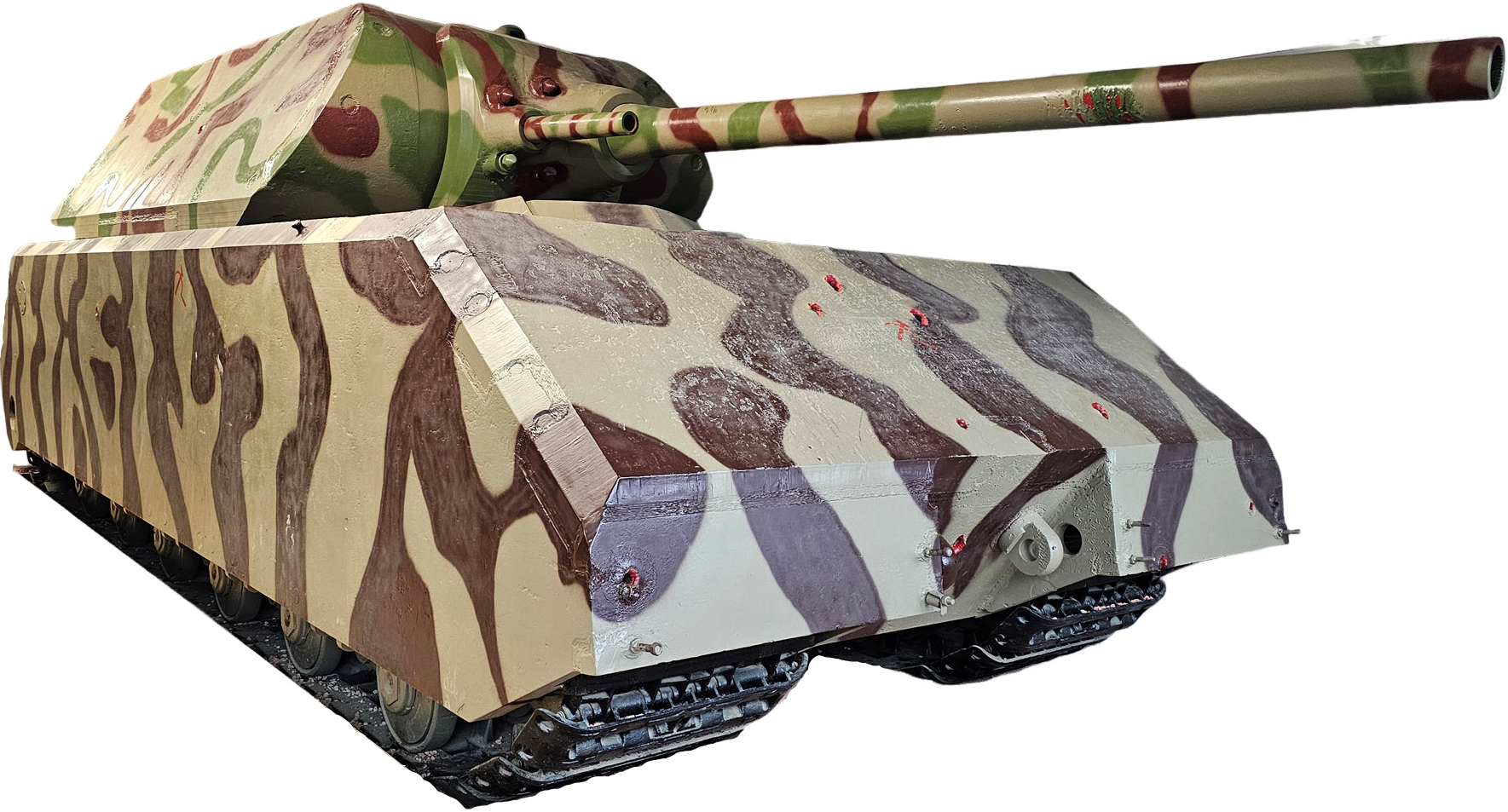
- The first plans for the super-heavy tank, still under the original name Mammut, were submitted by F. Porsche as early as 1942.
- Before the end of the war, eight tanks were under construction, of which one was fully completed and capable of undergoing army trials.
- In total, 200 units were to be produced in two series, but in October 1943 A. Hitler personally canceled the order and ordered only the completion of the prototypes under construction.
- Even the most powerful engine available in Germany could not move the 188-ton tank at the originally planned speed of 20 km/h.
- Due to the extreme weight of the tank, there was no bridge in Germany at the end of the war that could support the vehicle.
- The Maus was theoretically capable of deep fording (up to 13 meters), but such an operation was extremely risky because it risked getting stuck in the mud or encountering problems with the remote power cable.
- For possible transport of the tank, a special rail wagon had to be constructed with sufficient loading width and capacity.
- The Maus’s transmission was manufactured at Škoda Plzeň.
- Of the two completed units, shots were never fired at the enemy. One prototype was destroyed by the Germans in Kummersdorf so that it would not fall into enemy hands, and the other was damaged during transport to positions during the defense of Berlin.
- The tank captured by the Red Army was towed to the Soviet Union, where it remains on display in a military museum to this day.
- After the capture of Berlin, construction plans for an even heavier tank, the Mauerbracher, were discovered, which according to available information was never built. However, legend has it that one unit was constructed and deployed in April 1945 during the defense of Berlin, where it fell into a subway tunnel and was later encountered by a drilling rig during the city’s reconstruction, forcing the subway route to be diverted.
Technical parameters: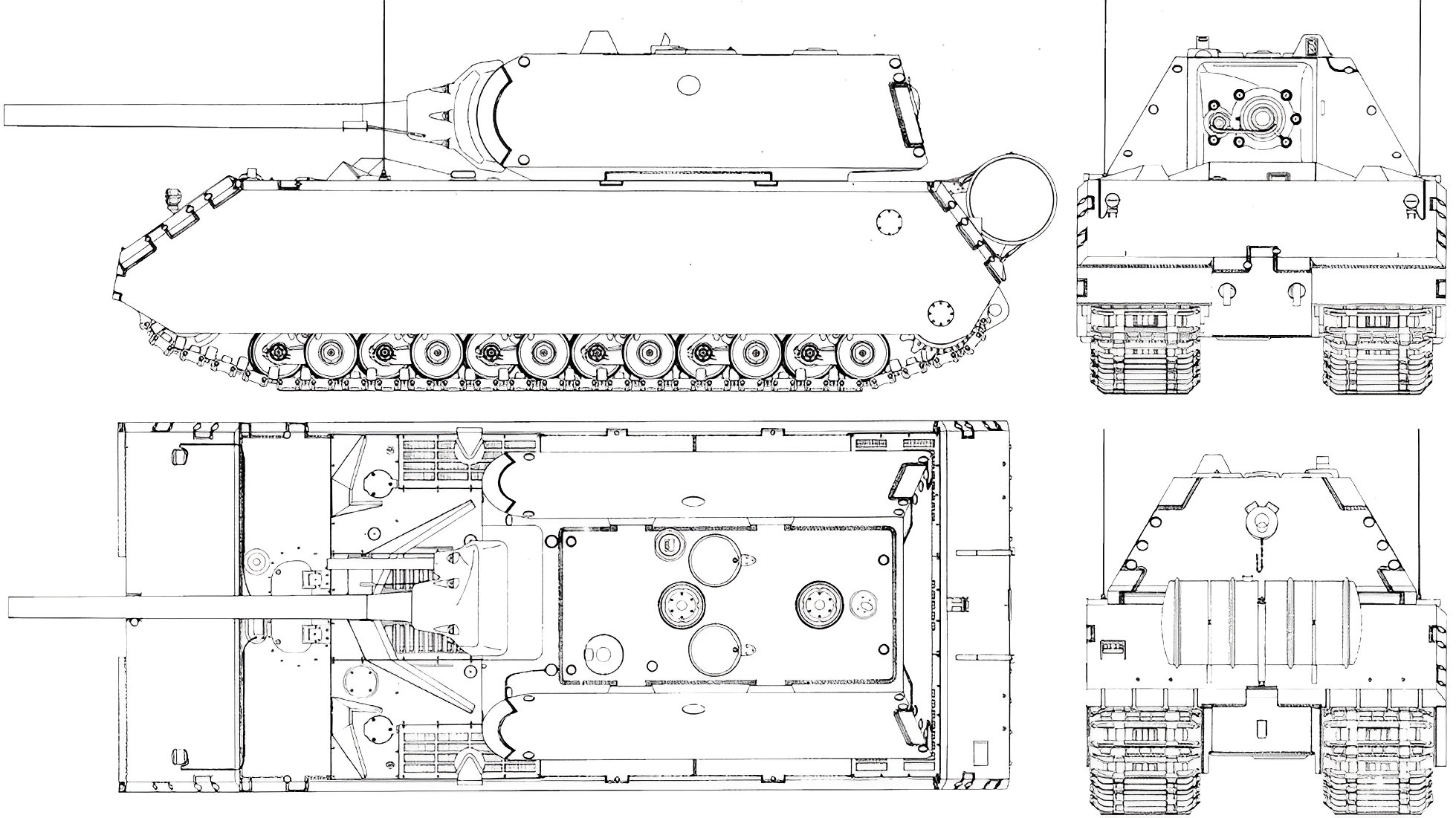
- dimensions: length 10.9 m, width 3.76 m, height 3.66 m
- weight 188,800 kg
- armor: front 220 mm, sides and rear 60 mm
- power unit: marine diesel engine Daimler-Benz MB517 44.5 l 12-cylinder with an output of 895 kW with electric drive transmission
- maximum speed 20 km/h
- internal fuel tank capacity 1500 l + 700 l external tank
- fuel consumption 940 l/100 km
- range 160 km on road and 60 km off-road
- main armament: KwK44 L/55 cannon, caliber 128 mm
- secondary armament: KwK 44 L/36.5 cannon, caliber 75 mm + MG 34 machine gun, caliber 7.92 mm
- crew 6 persons
Record from the British intelligence report BIOS March 1945:
“From the testimony of the Allied Czechoslovak military intelligence agent (cover name Mechanic) it emerges that Germany is striving to build a super-heavy tank. According to the description of production fragments, the weight of the machine can be estimated at more than 200 tons. The agent’s testimony will be immediately forwarded for further analysis.”
| Ausführung (Serie) | 06/2025 |
|---|---|
| Skala | 1 : 35 |
| Empfohlenes Alter | 11+ |
| Anzahl der Teile | 1353 Stk. |
| Gewicht der Verpackung | 1395 g |
| Anzahl der Figuren | 2 Stk. |
| Abmessungen nach der Montage | 30,5 x 11 x 11 cm |
| Abmessungen der Box | 44,5 x 30 x 9 cm |
| Kompatibel mit Bausätzen anderer Hersteller | Ja |
| Enthält Leuchtwürfel | Nein |
| Material | Plastik |
| Kollektion | World War II |
Diskuze je prázdná.
Über das Produkt wurde noch keine Rezension geschrieben.









